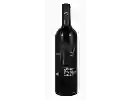
Château de LastoursCorbières Blanc
In the mouth this white wine is a .
This wine generally goes well with vegetarian, poultry or lean fish.
Taste structure of the Corbières Blanc from the Château de Lastours
Light | Bold | |
Dry | Sweet | |
Soft | Acidic |
In the mouth the Corbières Blanc of Château de Lastours in the region of Languedoc-Roussillon is a .
Food and wine pairings with Corbières Blanc
Pairings that work perfectly with Corbières Blanc
Original food and wine pairings with Corbières Blanc
The Corbières Blanc of Château de Lastours matches generally quite well with dishes of pasta, vegetarian or poultry such as recipes of spaghetti with shrimp and cream, vegan leek and tofu quiche or roast chicken and potatoes.
Details and technical informations about Château de Lastours's Corbières Blanc.
Discover the grape variety: Goruli mtsvane
An endemic Georgian grape variety, known since ancient times, it is most regularly found today in the Kartli and Imereti regions. It is practically unknown in other wine-producing countries. It should not be confused with, among others, Mtsvane Kakhuri and Gorula Mtsvane (table grapes), which are also white and native to Georgia.
Informations about the Château de Lastours
The Château de Lastours is one of of the world's greatest estates. It offers 13 wines for sale in the of Corbières to come and discover on site or to buy online.
The wine region of Corbières
Corbières is an important appellation in the Languedoc-roussillon">Languedoc-Roussillon region of southern France. It is one of the best known and most productive appellations in the Languedoc. The Corbières vineyards produce large quantities of red and rosé wines, as well as a growing number of white wines. The reds are the strongest Part of the appellation; they are reputedly Rich and herbal, made from Grenache, Syrah, Mourvèdre, Lledoner Pelut and Carignan.
The wine region of Languedoc-Roussillon
Languedoc (formerly Coteaux du Languedoc) is a key appellation used in the Languedoc-Roussillon wine region of southern France. It covers Dry table wines of all three colors (red, white and rosé) from the entire region, but leaves Sweet and Sparkling wines to other more specialized appellations. About 75% of all Languedoc wines are red, with the remaining 25% split roughly down the middle between whites and rosés. The appellation covers most of the Languedoc region and almost a third of all the vineyards in France.
The word of the wine: Cupbearer
Person in charge of choosing and serving wines. Old term for the sommelier.














